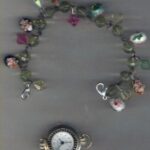Allergic contact dermatitis (ACD – inflammation of the skin) is a condition, develops when the skin comes in contact with a substance (allergen) that produces an allergic reaction. When the skin is sensitive or when exposed to allergens, exposure will produce a rash or itchy skin condition. Some people are born or develop hypersensitivity to certain type of allergens, usually organic substances or chemicals. The rash becomes noticeable within hours or days, from the time of the exposure or contact. Dermatitis usually shows redness, swelling, and water blisters, from tiny to large. The blisters may break, forming crusts and scales. Furthermore, the skin may darken and become leathery and cracked if untreated, and can be more difficult to distinguish from other rashes. Certain allergic contacts to the skin is unrelated to any allergen, such as urticara (red patches and weals surround the red central area of any skin reaction), in which rash appears within minutes of exposure and fades away within minutes to hours, common to an allergic reaction such as latex. Also, irritant contact dermatitis or hand dermatitis skin condition is caused by excessive exposure to an irritant, includes water, soap, detergent, solvents, friction, acid and alkalis. A patch test diagnoses the substance or allergens, best done with help of a dermatologist (or allergist) or can be done by your self. During the test small amounts of suspected allergens is applied to the skin for period of time (usually two days), and observing for any allergic reaction.
Nickel Allergy is one of the ten most common causes of allergic (A type of allergen) contact dermatitis and classified as an occupational hazard. Long-term exposure to nickel fumes can lead to cancer and death. Recommend wearing a facemask to limit exposure when metal compounds (For example: Nickel – iron is used to manufacture stainless steel) are welded or cut. Nickel Allergy affects fifteen to twenty percent of women. Rarely this allergic dermatitis is diagnosed in men or develops through occupational exposure (Hairdresser, bar staff, and metal workers). The silvery-white metal is found in many everyday items (Often mixed with other metals to produce alloys), including watchbands, clothing fastener, hairpins, coins, utensils, paper clips, tools, keys, Jewelry (earnings, rings, bracelets, and necklaces), and eyeglass frames. The metal is primarily used to enhance the durability as well as luster to other metals. Nickel Allergy primary onset, during adolescent years and attributed to itchy red patches. Studies of youth with pierced ears have nickel allergy at thirty-one percent. Alarming statistics have shown nickel allergy is rising, due in part to the increasing popularity of body piercing, which allows nickel from jewelry to enter the body. Most people who have nickel allergy are only able to wear jewelry that is eighteen Karat gold, silver, surgical stainless steel, gold plating with 24K (less likely to have an allergic reaction) or must be hypoallergenic. Also, applying clean nail polish to earrings avoids any contact of nickel to the skin. Otherwise, receive medical treatment or avoid all nickel costume jewelry. Some people may consider this allergic reaction to be only a minor annoyance. However, in severe cases, the rash and extreme itching can be disabling, especially when located on the hands. The allergic reaction to nickel exposure to the skin, may not occur immediately or may take a prolong exposure to the skin, depending upon an individual’s susceptibility. Foods containing traces of nickel may attribute to nickel allergy in a small percentage of the population. Sweating or perspiration while wearing an item containing nickel can increase the chance of dermatitis. Treatment for nickel allergy includes: Corticosteriods (creams or oral prescribe medication – Some people are allergic to corticosteriods.), wet compresses (containing Burrow’s solution which is diluted with white vinegar), moisturizing creams (Soften dry rough skin and alleviate itching), and Antihistamines (Diphenhydramine (Benadrl) or loratadine (Claritin)) reduces itching.
Nickel Solution (Nickel Solution Detect & Protect 2-Part System) detects nickel in metal items and protects the skin from the metal. Each system comes with one 0.23 oz bottle of Nickel Alert and one 0.23 oz bottle of Nickel Guard – Dermatologist recommended.
In January 2007, Plymouth Pharmaceuticals, Incorporated announced the available prescribe sale of Psorizide(R) Forte tablets, for the treatment of nickel allergy. Dr. Steven A. Smith, MD, and a fellow of the American College of Physicians, who had formulated a better way to treat patients with nickel jewelry allergy said: ” Psorizide(R) is a prescription, biochemical homeopathic tablet that is safe and completely steroids free. Most cases of common jewelry allergy can now be cured by a novel pill containing the actual offending agent – Nickel. A unique program of oral nickel desensitization (Psorizide(R) Forte) prevents this angry, itchy, red skin reaction.” The medication works similar to hay fever desensitizing shots. The course of treatment initially starts administering very small dose, than gradually increases the dose, until the body begins to accept the nickel instead of causing an allergic skin reaction. During a clinical case study, eighty-one percent (48 out of 59) successfully completed a six – week course treatment. Miles Smith, Vice President of Plymouth Pharmaceuticals said: “Psorizide(R) Forte tablets can be swallowed, chewed, or dissolved by mouth for easy use. Side effects are few and price is very competitive with other prescription treatments. McKesson, Cardinal Health and Amerisource Bergen the three largest US drug wholesale distributor, currently stock Psorizide(R) Forte; pharmacies routinely use of these distributors to fill a prescriptions.”
During the annual American Academy of Dermatology (AAD) meeting in Washington, the week of February 2 – 6, 2007: Dr. Miles Smith will be available for physicians to physician consultations and media interviews by advance appointment only. The company’s tradeshow booth is #4125.


